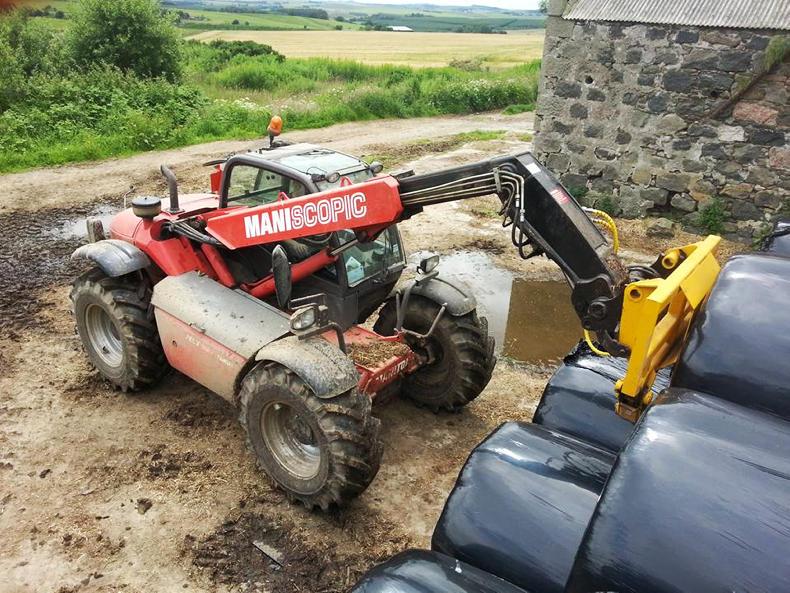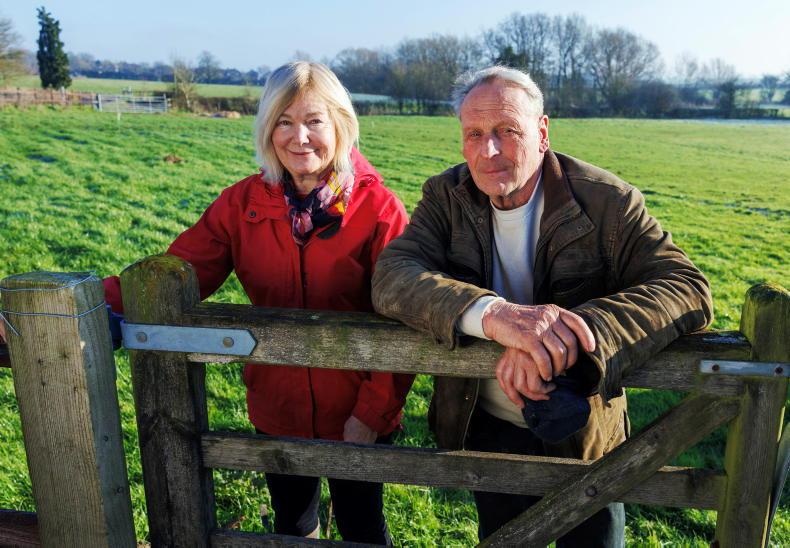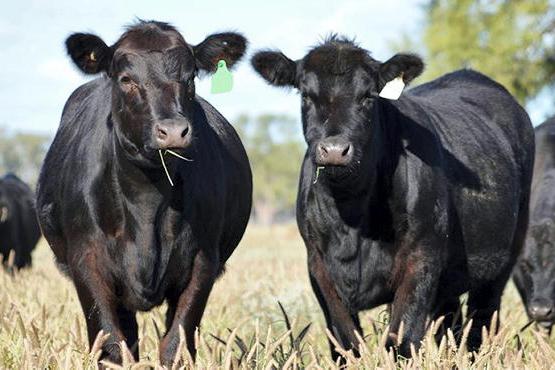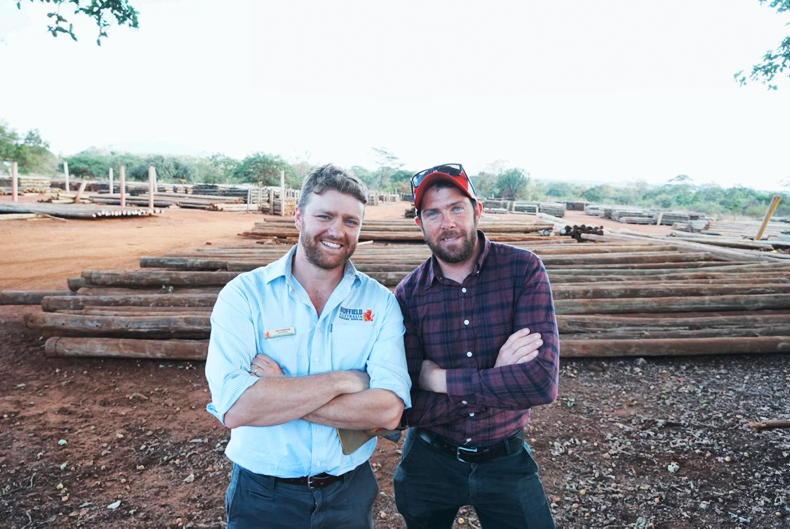All of the focus farms have been affected by the extended winter period this year. However as the winter progressed, plans have been put in place to minimise the disruption caused by the weather. Many of the options described in this week’s Fodder Focus have been adopted by the FPP farms to boost fodder reserves for next winter.
Mark and Shona Mackay, Greenvale farm, Thurso, Caithness
Wet weather in the second half of the grazing season left ground conditions less than favourable, which led to cattle being housed slightly earlier than planned. We didn’t experience the heavy snowfalls here as much as the rest of the country and we were actually able to get some young stock out for a few days in January to graze off some heavy covers. Cows were housed in excellent condition and we were able to use this in the early part of the winter to reduce silage intake in the cows slightly, with straw available to them ad-lib. This has been a massive cost saving across the whole herd and helped stretch silage reserves through the winter. The weather amplified the need to keep a close eye on changes in body condition throughout the winter – you don’t want cows losing condition too quickly, it needs to be a slow and controlled loss. About two months pre-calving we upped silage allowance to the cows.
We managed to get some cows and calves out this week, grass is growing and ground conditions are decent. There’s no point letting grass growth get ahead of the herd as it will mean we are playing catch-up for the first half of the summer. Hopefully, if weather conditions remain favourable, we will have more out in the coming week or so.
The Biffen family, Arnage Farms, Ellon
We had to start supplementing cows by mid-September here at Arnage. The heavy ground here was just so wet that grass growth was practically non-existent. This meant we were going to be short of fodder if couldn’t get out to grass early this spring. The way the weather has been meant this didn’t happen and so we decided to start buying silage in mid-March.
We still had some of our own pit left at this stage, but decided by buying early we could stretch our own reserves that bit longer. We were paying £18/t plus haulage for decent-quality silage, which, when you do the sums up, is fairly comparable with the cost of making your own silage. However, having enough of your own allows you full control over silage quality.
With this in mind, we hope to cut an extra 10 acres twice this year to boost silage reserves for next winter. We also hope to be able to conserve some baled silage from the rotational grazing of the sheep in times of high growth. We will also grow more turnips for the sheep next year, to give the grass parks an extended rest through early spring.
One thing this winter has proven is that no farm can afford to be carrying passengers in the system. It has been much easier to manage the cattle this winter with most of the cows dry and just a small number of autumn-calving cows. Anything that was scanned not in calf has been culled.
The Duffus family, Mains of Auchrichan, Tomintoul
We have been supplementing the sheep here since early December. That makes it a long winter. Usually we would only have to start feeding in mid-January, depending on the weather. The ground has been white more often than green this winter. This is on the back of a cold and wet autumn, which led the ewes being in poorer condition coming into spring anyway. It really affected scanning, with a large number of single-bearing ewes, although already we’ve had a number of ewes marked for a single coming with twins and twins with triplets. Luckily we had pre-lambing buckets out with the sheep early this year as they were that bit thinner.
Lambing has just kicked off this week and really the weather couldn’t be any better. Grass is starting to grow and earlier this week we spread 100kg/ha of 34% nitrogen on the grazing ground to give it a kickstart. The forecast looked decent for the coming 10 days, so we decided to get it out.
We’re okay for silage at the moment, we typically feed into May anyway so that’s nothing new for us. There are about three weeks or so left in the pit and we have the guts of 100 bales left. Hopefully this will be more than enough if the weather keeps up. Last year we lost a lot of lambs during a heavy snowfall in late April, this year we have our lambing shed up, so we probably won’t need it.
The Duguid Family, Mains of Cranna, Aberchirder
The season has been a fair challenge for us, but we have been fortunate in some of the decisions that we made. In the early part of winter we put 20 well-conditioned dry cows on a straw and syrup diet. This reduced the amount of silage that we needed every day and it also meant less straw being used overall because the bedding was so dry. This has meant that we still have some silage left. However, the back wall of the pit is now rapidly approaching.
While this is concerning, I got out with 40kg/ha of nitrogen in late March and the fields treated are really starting to green up. Pre-lambing the sheep also went on to swedes with a runback and this has also meant that some grass was kept in reserve ahead of the spring.
We are now in the late stages of lambing and while there is a nibble of grass there, it is not much. We are keeping on feeding the sheep until the grass kicks in properly.
Next year we aim to have more cows on the straw and syrup diet to further reduce our costs and silage demand. We plan to wean calves a little earlier than we would have previously to give them a chance to come in with condition on their backs, so we can slim them down over the first half of winter. This will further reduce pressure on silage stocks and straw.
The Webster family, Ardhuncart, Mossat
It has been a long winter with us and we are glad to see the grass is starting to look a better colour. We kept some cattle out for a bit longer in the backend, but it has fairly cut up some of the fields and we will need to do some repair work once conditions allow.
The sheep spent some time pre-lambing on swedes and this has worked well for us this season. We plan to put more in for next year and might combine that with sorting some of the grass by putting it down to swedes this winter and sowing it back out in grass next year.
We have been buying straw since January and with the price it is making, have put some of the dry stock out on to the hill ground to take the pressure off bedding. We are looking at setting up a more permanent area on the hill for next winter to carry the dry stock to reduce our costs indoors.
Lambing has finished and ewes are needing a fresh bite of grass. We have a new grass field split up for paddock grazing and they will go on to this. Hopefully, if grass growth allows, we can take some extra silage from there for next year.
Alongside that, our fallow requirements have dropped this year. That has meant that we will be able to cut the red clover earlier and take at least two cuts from it this year to bolster silage reserves.
The Gammie family, Drumforber, Laurencekirk
With a historic turnout date in the middle of May, we are well used to the conditions that we have faced so far this winter. Our land is quite heavy and can hold the water well. However, last year we had cattle out in the last days of March and all being well, by the time you read this, we will have the majority of the cattle that can go out at grass. We will be keeping in those that still have to calve and turning them out once the calves are on the ground.
This past winter we used a lot of straw for feeding, both normal straw and ammonia treated. This really cut down on our silage usage, but with increasing numbers we have still run a little short in the last couple of weeks of the season. We had already planned to feed a good-quality protein supplement to pre-calving cows (originally soya), but with the shortage of fodder we took the opportunity to buy some draff. This gave us better-quality protein for the cows and also helped to stretch forage reserves. Unfortunately, when we wanted a second load everyone else was too, so we ended up buying some bales of silage locally.
Our fertiliser went out a little later than we had originally planned, but the snow had delayed deliveries and our fertiliser didn’t arrive until the beginning of the month. This meant that the first couple of bags were lifted straight off the lorry and into the spreader to get things moving. This coming winter we will have more silage available to us as we have sown out our fallow ground in a red clover mix. This will get cut at the end date of the fallow period and if the season gives us enough growth, we should get a second cut in September.
We are also sowing out another field in grass and this will come in to play later in the season, when we can make the decision whether to cut it or graze it.












SHARING OPTIONS